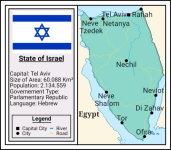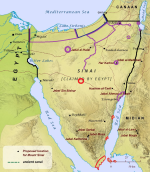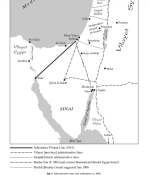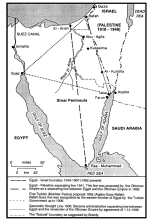Jackson Lennock
Well-known member
What if the 1903/1904 Zionist proposal to set up a settlement in El Arish (Sinai) had gotten the go ahead from the British? The Zionists weren't politically savvy at the time. They submitted a report to the British focused on the ecological feasibility, but didn't realize they should have been focused on fiscal practicalities if they wanted to win over the British.
I came across this map on Reddit, which gave me the idea for this post.

The Anglo-Ottoman Border negotiation in 1906 saw the British first propose a line from between Rafah and Gaza City to the southernmost point of the Dead Sea. I suppose in this case, they might try for a similar line. See below - a line straight from the Mediterranean (between Gaza and Rafah) due east to the Dead Sea.

I came across this map on Reddit, which gave me the idea for this post.

The Anglo-Ottoman Border negotiation in 1906 saw the British first propose a line from between Rafah and Gaza City to the southernmost point of the Dead Sea. I suppose in this case, they might try for a similar line. See below - a line straight from the Mediterranean (between Gaza and Rafah) due east to the Dead Sea.







